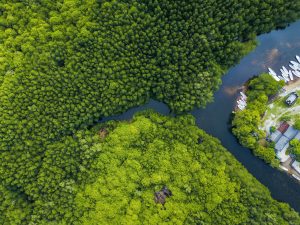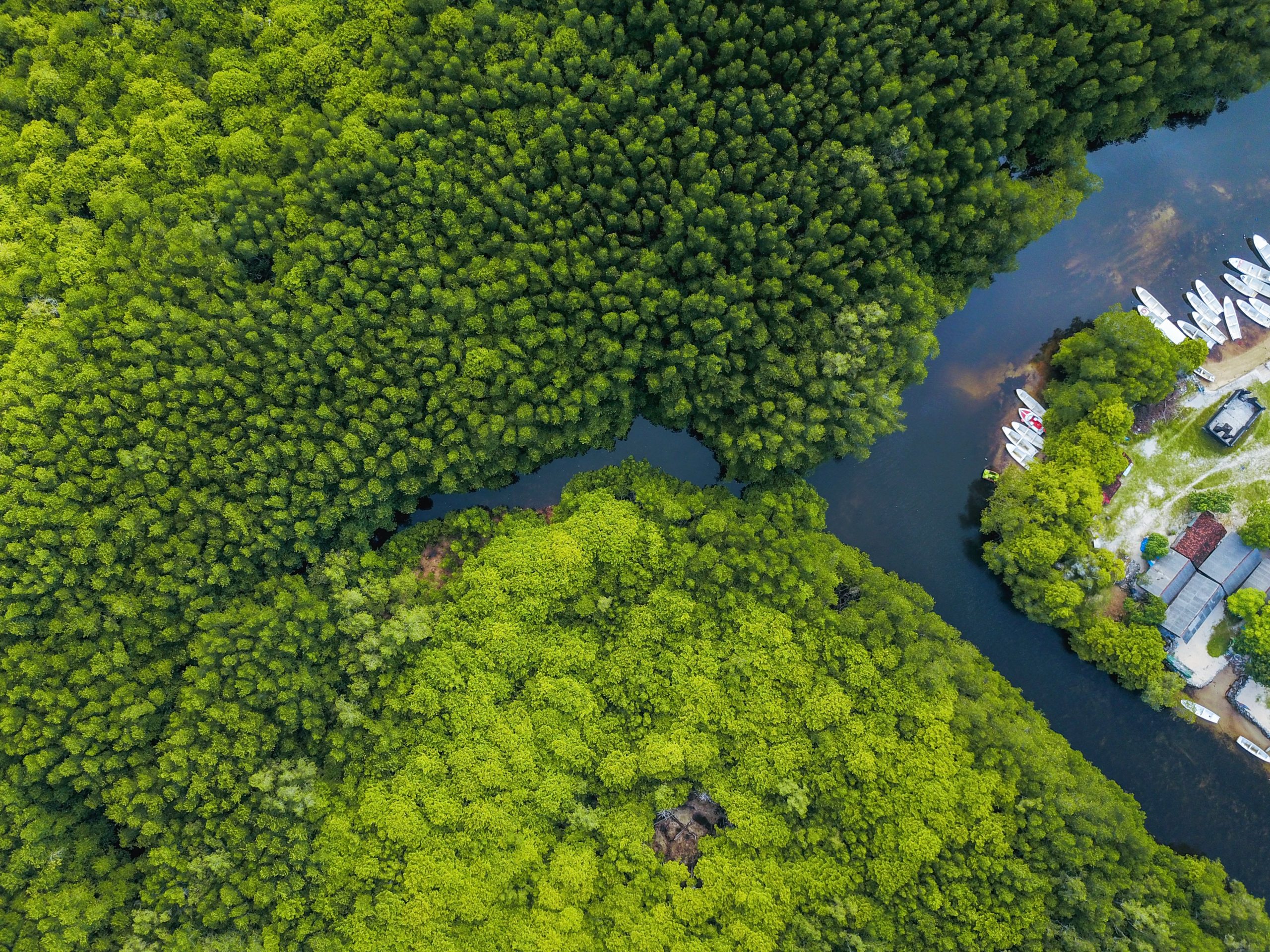
International Union for Conservation of Nature (IUCN) members adopted a resolution at the 2016 World Conservation Congress and members’ assembly which, for the first time, defined the use of nature for simultaneous benefits to biodiversity and human well-being. According to the resolution, nature-based solutions are defined as “actions to protect, sustainably manage and restore natural or modified ecosystems that address societal challenges effectively and adaptively, simultaneously providing human well-being and biodiversity benefits”.
The crucial role of nature-based solutions in addressing the twin crises of climate change and biodiversity loss was highlighted in a COP27 session organised by the IUCN. At the session, Monica Medina, US Special Envoy for Biodiversity and Water Resources, and Assistant Secretary of State for Oceans and International Environmental and Scientific Affairs stated “Nature-based solutions are the most effective and necessary solution for climate and biodiversity today. We can solve both the climate and biodiversity crisis at the same time.”
But what does it actually mean? We sat down with EnviroStrat’s Sustainability Director, Cerasela Stancu, to understand more about what are, and aren’t, nature-based solutions.
Q. What are nature-based solutions (NbS)
A. In a new research report that EnviroStrat co-authored with Mana Impact, Catalysing nature-based solutions: Perspectives and practices for developing high-quality projects, NbS are defined as “a wide range of ecosystem-related approaches for addressing urgent societal challenges such as climate change, disaster prevention, and water and food security. NbS involves actions to protect, restore and manage ecosystems and their functions, either stand-alone interventions or in conjunction with engineered solutions, that result in increased human well-being as well as environmental benefits”.
Essentially that means we look at how we work with nature in a way that meets some of the challenges facing society; adapting to climate, food provision, mitigating climate change for example. Often that requires protecting nature (leaving it alone) and other times it’s about working with nature to provide the services we need. To make it really easy to grasp, it’s about how nature helps our own needs.
For example, creating natural features to stop nutrients and sediment going into streams and reaching the ocean, or green infrastructure where instead of discharging wastewater into rivers or the ocean, we use wetlands and their bioremediation capability to clean waste water.
NbS are particularly important in urban environments. Creating natural buffers in cities so we can mitigate floods caused by increasingly frequent extreme weather events is such an example. The ‘sponge city’ concept involves extensive areas of wetlands and forests in an urban setting that in extreme rain events will soak up water, conversely when we have extended periods of drought they become a source of water. We can work with nature to deal with temperature increases, for example, in many large cities you’ll find extensive park networks that are intended to bring down the temperature in a heatwave and provide relief for humans.
Q. What aren’t NbS?
A. In general, NbS are not solutions in which we massively manipulate or engineer the ecosystems or do not provide benefits to the local community. Just because ecosystems exist in their natural form, it doesn’t mean we can fully change them for our own needs and still consider that a NbS. For example, if we were to pave all of the streams and rivers in a city and rechannel them to reach different parts of the city that’s simply exploiting nature for our own needs and that’s not a NbS.
Q. What are the benefits of NbS projects?
A. The benefits are broad. Well designed and well implemented NbS have environmental outcomes, such as climate change adaptation and resilience, water quality improvement, and biodiversity gains, as well as social benefits for local communities. They also provide for economic impact. A key benefit moving forward is going to be around climate resilience, and our capacity to adapt and be resilient to these massive changes we’re facing, including food provision and security. That’s why there’s a focus on soil conservation and water scarcity.
We know that NbS not only help resolve some of the environmental challenges but at the same time they provide jobs and opportunities to build new skills for communities, both urban and rural.
Q. How can you prove that NbS are effective?
A. Essentially that’s the purpose of the Catalysing Nature-based Solutions report we co-authored. The IUCN Global Standard for Nature-based Solutions defines the concept and there is a need for more clarity and insights into what high-quality NbS projects look like. This is why it’s important NbS have a robust approach to measurement, reporting and verification (MRV) to demonstrate their ability to really deliver. MRV isn’t just about the final outcome and impact, but about the process of how you get there. For example, how do you design the solutions, engage the community, do you take into account costs and benefits, are the right stakeholders at the table
If you think about our experience in New Zealand, we apply a four wellbeing framework (environmental, social, cultural, economic) to measure outcomes for our communities. Metrics for social outcomes might include opportunity to upskill or the level of community engagement. For environmental outcomes this might include different ways of approaching them, or focusing on specific ecosystems. Cultural indicators and metrics should be identified from an indigenous perspective. Economic metrics might look at if the NbS is viable from an economic impact or cost / benefit perspective; this is particularly important to support the case for investment.
With the Catalysing Nature-based Solutions report we looked at metrics at an ecosystem level but we also tried to group NbS projects by the outcome they were seeking, for example climate adaptation, climate mitigation and biodiversity metrics (species, habitat, trends and conditions, services they provide).
Q. Can NbS be done at scale?
A. In short they can and they need to be at scale to make a difference. We are still faced with a range of barriers and challenges. The Catalysing nature-based solutions report talks about many of these, including aspects linked to community engagement and how we design NbS projects. To replicate and scale, NbS projects should be economically viable, otherwise the pathway to scaling is challenging. Achieving scale for NbS projects takes time, needs skills, knowledge, networks, capital and patience which makes it complex.
Examples of NbS projects done at scale include wetlands in urban environments for stormwater management and flood protection. Afforestation has been successfully implemented at scale in many parts of the world including here in Aotearoa NZ – though we still face significant barriers to native afforestation. Scaling NbS projects in the marine environment has been more challenging, partly because the oceans are part of the ‘global commons’ and are therefore not owned by any particular entity or group – access and ownership rights are hard to establish. Marine NbS projects haven’t been focused on as much to date as terrestrial projects.
Q. Are NbS cost effective?
A. Yes, a precondition for NbS projects to work is that they have to be economically viable, otherwise they will face issues when seeking to scale. NbS are preferable to engineered solutions which tend to be expensive, complex and often not permanent.
Q. As an investment category, why do NbS receive comparatively little investment?
A. Insufficient supply of investible projects is often cited as a roadblock when it comes to investing in NbS. Globally, and certainly in New Zealand, there aren’t enough land, fresh water, or marine projects being created to provide opportunities for investors wanting to invest in solutions that deliver real tangible and significant environmental improvements, and that provide a financial return.
The challenge of creating a pipeline of investible NbS and projects that deliver true impact at scale is something we’re tackling daily at EnviroStrat. A good example is our regenerative ocean farming pilot where we’re using marine ecosystems to provide for the growth of seaweed that delivers a range of outcomes. For example, there are a number of biodiversity benefits and ecosystem services from water quality enhancement to storm surge buffering. Aside from its importance to the ecosystem, seaweed also has environmental benefits through the uptake of carbon dioxide and nutrients like nitrogen and phosphorus helping to regulate oceanic conditions to varying extents and creating an environment for other marine species, like mussels and juvenile fish, to thrive. Socially, the knowledge gained through the pilot will enable marine farmers to easily add seaweed farming alongside existing aquaculture activity.


